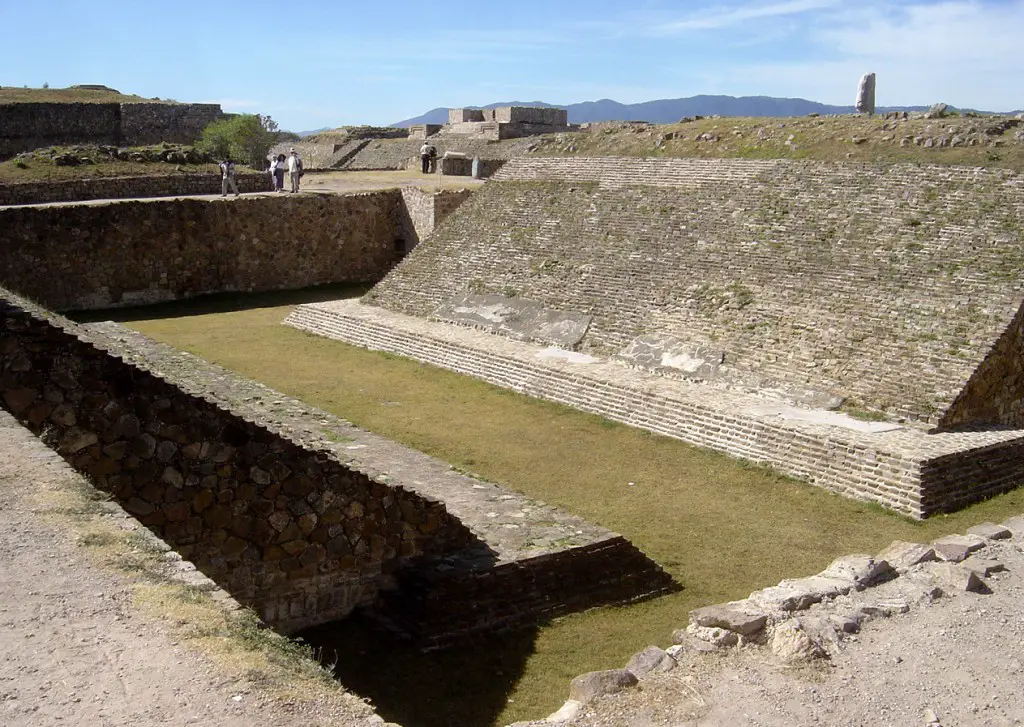
George Washington University Professor Jeffrey P. Blomster’s latest research explores the importance of the ballgame to ancient Mesoamerican societies.
Dr. Blomster’s findings show how the discovery of a ballplayer figurine in the Mixteca Alta region of Oaxaca demonstrates the early participation of the region in the iconography and ideology of the game, a point that had not been previously documented by other researchers. Dr. Blomster’s paper, Early evidence of the ballgame in Oaxaca, Mexico, is featured in the latest issue of Proceedings in the National Academies of Science (PNAS).
Dr. Blomster, GW associate professor of anthropology, has spent 20 years researching the origin of complex societies in Mesoamerica. The participation of early Mixtec societies in ballgame imagery is a new aspect of his research. For the journal publication, Dr. Blomster worked with undergraduate students Izack Nacheman and Joseph DiVirgilio to create artistic renditions of the figurine artifacts found in Mexico.
While early games used a hard rubber ball, the ballgames Dr. Blomster researches bear little resemblance to today’s Major League Baseball. The games and the costumes or uniforms participants wore were tied to themes of life and death, mortals and underworld deities or symbolizing the sun and the moon. In some instances, the ballcourt itself represented a portal to the underworld.
According to Dr. Blomster, “Because the ballgame is associated with the rise of complex societies, understanding its origins also illuminates the evolution of socio-politically complex societies.”
During the Early Horizon period, or roughly between 1400 BCE (Before the Common Era) and 1700 BCE, there was little evidence of ballgame activity in the way of artifacts in the Oaxaca region of Mexico. Dr. Blomster’s findings of a clay figurine garbed in distinctive ballgame costume, similar to both Olmec figurines and monumental sculptures from the Gulf Coast, indicate such engagement did take place in the area.
“Exploring the origins and spread of the ballgame is central to understanding the development of the Mesoamerican civilization,” he said. “We know there were earlier versions of a ballgame prior to the Early Horizon with both a ballcourt and rubber balls found in coastal Chiapas and the Gulf Coast, but the institutionalized version of the ballgame, a hallmark of Mesoamerican civilizations, developed during the Early Horizon. While there has been some limited evidence about the participation of the nearby Valley of Oaxaca in the ballgame, the Mixteca has largely been written off in terms of involvement in the origins of complex society in ancient Mexico. This discovery reemphasizes how the ancient Mixtecs were active participants in larger Mesoamerican phenomenon.”
PNAS is one of the world’s most-cited multidisciplinary scientific serials. Since its establishment in 1914, it continues to publish cutting-edge research reports, commentaries, reviews, perspectives, colloquium papers and actions of the academy.
Background:
Established in 1821 in the heart of the nation’s capital, The George Washington University Columbian College of Arts and Sciences is the largest of GW’s academic units. It encompasses the School of Media and Public Affairs, the Trachtenberg School of Public Policy and Public Administration and more than 40 departments and programs for undergraduate, graduate and professional studies. The Columbian College provides the foundation for GW’s commitment to the liberal arts and a broad education for all students. An internationally recognized faculty and active partnerships with prestigious research institutions place Columbian College at the forefront in advancing policy, enhancing culture and transforming lives through research and discovery.
About George Washington University
In the heart of the nation’s capital with additional programs in Virginia, the George Washington University was created by an Act of Congress in 1821. Today, GW is the largest institution of higher education in the District of Columbia. The university offers comprehensive programs of undergraduate and graduate liberal arts study, as well as degree programs in medicine, public health, law, engineering, education, business and international affairs. Each year, GW enrolls a diverse population of undergraduate, graduate and professional students from all 50 states, the District of Columbia and more than 130 countries.




